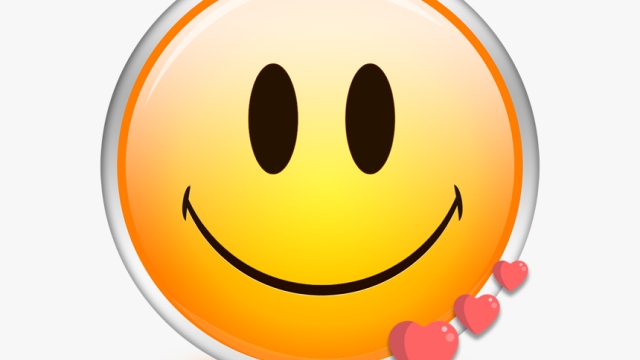
In today’s digital landscape, communication has evolved beyond text alone. With the advent of emoticons and now emojis, expressing our thoughts and emotions has become more vibrant and engaging. As we seek to enhance our conversations, AI emoji generators have emerged as powerful tools that can transform ordinary words into visual representations, adding a splash of creativity to our messages.
Imagine giving a simple message a whole new layer of meaning just by incorporating emojis that perfectly capture your intent. AI emoji generators harness the capabilities of artificial intelligence to understand context and sentiments, allowing users to easily convert their words into relevant emojis. This not only makes communication more enjoyable but also helps bridge language barriers and enhances emotional expression. Whether you are looking to spice up your social media posts or make your text messages more lively, embracing these innovative tools can elevate your digital conversations to new heights.
What is an AI Emoji Generator?
An AI emoji generator is a tool that uses artificial intelligence to create emojis based on text input or concepts. This technology analyzes the words you provide and generates corresponding emojis that represent those ideas visually. It takes into account the context and meaning of your text, allowing for more accurate and expressive emoji suggestions.
These generators are designed to enhance communication by adding visual elements to messages. Instead of relying solely on pre-existing emojis, users can access a dynamic library of symbols that evolve with language trends and cultural shifts. This innovation makes it easier to convey emotions and ideas, making conversations more engaging and relatable.
As social media and digital communication continue to evolve, AI emoji generators are becoming increasingly popular. They offer a creative way to express thoughts and feelings, allowing users to personalize their messages. By tapping into the power of AI, these tools make it possible to unlock a whole new language of visual communication.
How AI Generates Emojis
AI emoji generators utilize machine learning algorithms to understand context and emotions within text. By analyzing large datasets, these systems learn to associate specific words, phrases, and sentiments with corresponding emojis. This process involves natural language processing, which allows the AI to interpret the nuances of language and select emojis that best convey the intended message.
The core of these generators often lies in deep learning techniques, where neural networks are trained on vast collections of text and emoji pairings. These networks recognize patterns and make predictions based on the input received. For example, if a user types a message expressing happiness, the generator can suggest emojis like smiles or suns because it has learned that these images represent joy in various contexts.
Additionally, AI emoji generators often incorporate user feedback to improve their accuracy and relevance. As users send and receive emojis, the algorithms refine their understanding of what works best for different audiences. This continuous learning process makes AI-generated emoji suggestions more personalized, relevant, and engaging over time, enhancing digital communication.
Free emojis for online platforms
Benefits of Using Emoji Generators
Emoji generators offer a unique and engaging way to enhance communication. By transforming plain text into vibrant visuals, they help users convey emotions and tone more effectively. This visual element can bridge gaps in understanding, making conversations more relatable and enjoyable. Whether it’s for personal use or professional communication, adding emojis can foster a more dynamic interaction.
Another significant advantage of using AI emoji generators is their ability to save time and inspire creativity. Instead of spending time searching for the perfect emoji, these generators provide instant suggestions that match the context of the text. This efficiency allows users to focus on crafting their message rather than worrying about the visual components. Additionally, the creativity sparked by these tools can lead to more engaging content, whether in social media posts, emails, or presentations.
Lastly, AI emoji generators can cater to diverse preferences and styles. With customizable options, users can choose emojis that align with their personal or brand identity. This versatility ensures that the generated emojis resonate with the intended audience, making the communication more memorable. Overall, the use of emoji generators elevates the way we express ourselves, making conversations more colorful and impactful.
Real-World Applications and Use Cases
AI emoji generators have transformed the way we communicate in various fields. In marketing, brands utilize these tools to create engaging content for social media platforms. By incorporating personalized emojis that resonate with their audience, companies can enhance their brand identity and foster a stronger connection with customers. The result is an often more relatable and visually appealing marketing campaign that stands out in crowded feeds.
Education is another domain where AI emoji generators prove valuable. Educators can design interactive learning materials that include emojis to make lessons more engaging for students. This not only enhances student participation but also aids in the retention of information. By integrating emojis into quizzes and assignments, teachers can tailor learning experiences to be more fun and appealing, especially for younger audiences.
Additionally, AI emoji generators are making significant strides in the realm of inclusive communication. People with disabilities or language barriers can express themselves more effectively by using emojis that capture emotions and concepts that may be challenging to articulate through text alone. This opens up new avenues for personal expression and connection, allowing diverse groups to engage in conversations that transcend traditional language limitations.


